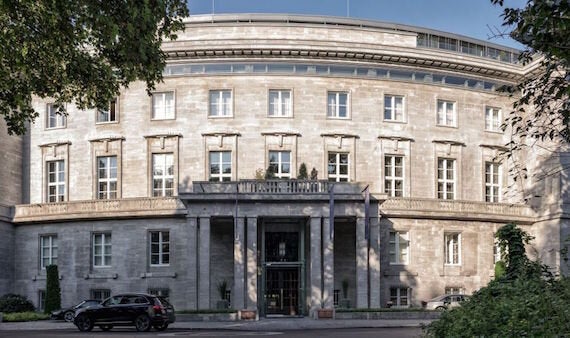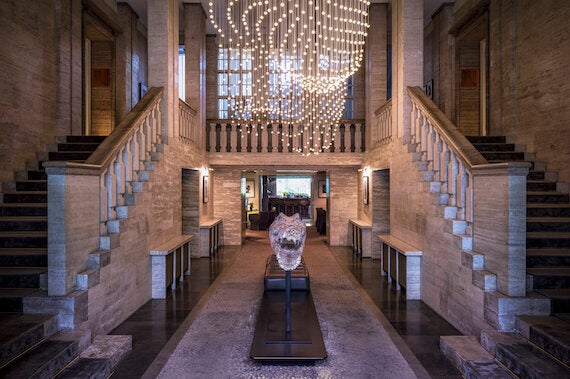Reminders of World War II present themselves everywhere in Berlin. A brick line twists throughout the city's roads indicating where the Berlin Wall once stood. Checkpoint Charlie, a crossing point between the East and West, remains intact and one of the city's most popular tourist hotspots. But 75% of the German capital's buildings endured some sort of damage during and after the war. Many were destroyed entirely. Some of those left standing wear patches to hide bullet marks on their exterior. The vestiges of World War II are still there.
Some buildings choose to show off their bullet holes like battle scars. The Old Masters Museum, which holds the world's largest collection of Rembrandt paintings, leaves its wounds on display. Even new buildings such as the city's Sony Centre are constructions built on the foundations of destroyed edifices.
Ruin and bullet wounds become metaphors for how the city has turned itself around. Berlin has rebuilt its identity while acknowledging these scars of history. Another building that recognises its past is the Das Stue hotel near The Tiertgarten park. With its own scars, the luxury hotel captures the city's culture and architecture.

Das Stue sits in the former Danish embassy
A former Danish embassy completed in 1940 houses this hotel, bar and restaurant. German architect Johann Emil Schaudt designed the building in a style typical of the era with a curved front façade made of natural stone. In 1943, the building was battered by war. It returned to being an embassy following 1945 before German Telekom and the national postal service took it over as a staff training venue.
Only in 2009 did it become the Das Stue hotel. An extension to the existing building juxtaposes its old and new architecture. Art and high design now fills the space. Shoots by legendary fashion photographer Horst P. Horst line the walls. The hotel's communal space has the elegant touch of international designer Patricia Urquiola. Furniture by Italian maker Moroso warms the bar. Old James Stewart films play on a screen in the background while guests sip elaborate cocktails. Das Stue's Michelin-starred restaurant Cinco by Catalan chef Paco Pérez welcomes diplomats from embassies in the surrounding area.

Luxury pervades the interiors of Das Stue
This is today's Berlin harnessed in one hotel. The play of international relations with art and design expresses the city's standing as the hippest of European destinations. Places with similar stories to Das Stue scatter around Berlin.
A war bunker holds the Boros Collection, an art gallery showcasing works by contemporary artists such as Ai Weiwei. The architecture remains that of an air raid shelter: dense, ominous and austere. But inside lies a large space perfect for displaying works. At the top, gallery owner Christian Boros and his wife Karen occupy a penthouse equipped with a small pool.
The Kaiser Wilhelm Memorial Church was built between 1891 and 1895. It was destroyed in the war like so many places in Berlin. The new structure, completed in 1961, integrates the ruins of its former incarnation in testament to peace and reconciliation. Bikini Berlin, a shopping mall opened in 2013, naturally stands opposite this Memorial Church.
A Soho House venue has become a prerequisite for capital cities around the world. Its Berlin base tells a story dating way before its modern guise of exclusivity. The private members' club occupies eight floors of a Bauhaus building in the city's Mitte region. It was once a centre for the SA and later an archival depot for the Communist Party.
It's easy to forget the history of where you are when inside these places. Art, design and cocktails can mask the past. But step outside and Berlin will show you its scars.
Images supplied by the Das Stue hotel